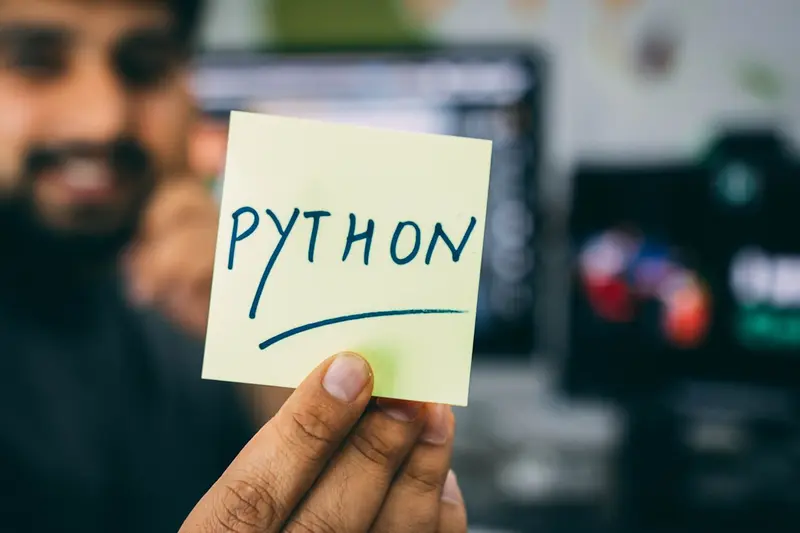🐍 Python Installation Complete Guide on AlmaLinux
Ready to start your Python programming journey? 🚀 Python is the world’s most popular programming language, and for good reason! In this comprehensive guide, we’ll install Python 3.11 on AlmaLinux and set up everything you need for professional Python development. Let’s unlock the power of Python together! ✨
🤔 Why is Python Important?
Python is the Swiss Army knife of programming languages! 🛠️ Here’s why millions of developers choose Python:
- 🎯 Easiest to Learn: Clean syntax that reads like English
- 💼 Highest Paying Jobs: Python developers earn $120k+ annually
- 🤖 AI & Machine Learning: Powers ChatGPT, TensorFlow, and more
- 🌐 Web Development: Django, Flask for powerful websites
- 📊 Data Science: NumPy, Pandas for data analysis
- 🎮 Game Development: PyGame for creating games
- 🔧 Automation: Automate anything with Python scripts
- 📈 Career Growth: Most in-demand programming skill
Python literally runs the world - from Instagram to NASA! 🌍
🎯 What You Need
Let’s prepare for Python mastery! ✅
- ✅ AlmaLinux 8 or 9 with internet connection
- ✅ At least 2GB RAM (4GB recommended)
- ✅ 5GB free disk space
- ✅ sudo privileges on your system
- ✅ Basic command line knowledge
- ✅ Text editor (we’ll install VS Code too!)
- ✅ 15 minutes of your time
- ✅ Excitement to learn Python! 🎉
Ready? Let’s make you a Python developer! 🌟
📝 Step 1: Install Python 3.11
AlmaLinux comes with Python, but let’s install the latest version! 🎯
# Check current Python version (if any)
python3 --version
# Install Python 3.11 and development tools
sudo dnf install -y python3.11 python3.11-devel python3.11-pip
# Install additional Python tools
sudo dnf install -y python3-setuptools python3-wheel
# Create Python 3.11 as default python3
sudo alternatives --set python3 /usr/bin/python3.11
# Verify installation
python3 --version
pip3 --versionExpected Output:
Python 3.11.5
pip 23.2.1 from /usr/lib/python3.11/site-packages/pipPerfect! 🎉 Python 3.11 is installed!
🔧 Step 2: Set Up pip Package Manager
pip is Python’s package installer - your gateway to 500,000+ packages! 📦
# Upgrade pip to latest version
python3 -m pip install --upgrade pip
# Install essential pip tools
pip3 install --user pipenv virtualenv
# Configure pip for faster downloads
mkdir -p ~/.config/pip
cat > ~/.config/pip/pip.conf << 'EOF'
[global]
timeout = 60
index-url = https://pypi.org/simple
trusted-host = pypi.org
pypi.python.org
files.pythonhosted.org
EOF
# Verify pip configuration
pip3 config listExcellent! 🚀 pip is ready to install any Python package!
🌟 Step 3: Create Virtual Environments
Virtual environments keep your projects organized and conflict-free! 🎭
# Install virtualenv and venv
pip3 install --user virtualenv virtualenvwrapper
# Add virtualenvwrapper to bashrc
echo '# Python virtualenvwrapper settings' >> ~/.bashrc
echo 'export WORKON_HOME=$HOME/.virtualenvs' >> ~/.bashrc
echo 'export VIRTUALENVWRAPPER_PYTHON=/usr/bin/python3.11' >> ~/.bashrc
echo 'source ~/.local/bin/virtualenvwrapper.sh' >> ~/.bashrc
# Reload bashrc
source ~/.bashrc
# Create your first virtual environment
mkvirtualenv my_project
# Activate the environment
workon my_project
# Install packages in virtual environment
pip install requests numpy pandas
# Deactivate when done
deactivateAmazing! 🎯 You’re using virtual environments like a pro!
✅ Step 4: Install Development Tools
Let’s set up professional Python development tools! 🛠️
# Install code formatting and linting tools
pip3 install --user black flake8 pylint autopep8
# Install Jupyter for interactive coding
pip3 install --user jupyter notebook
# Install popular frameworks
pip3 install --user django flask fastapi
# Install data science libraries
pip3 install --user numpy pandas matplotlib seaborn scikit-learn
# Install testing frameworks
pip3 install --user pytest unittest-xml-reporting coverageInstall VS Code for Python Development
# Import Microsoft GPG key
sudo rpm --import https://packages.microsoft.com/keys/microsoft.asc
# Add VS Code repository
sudo sh -c 'echo -e "[code]\nname=Visual Studio Code\nbaseurl=https://packages.microsoft.com/yumrepos/vscode\nenabled=1\ngpgcheck=1\ngpgkey=https://packages.microsoft.com/keys/microsoft.asc" > /etc/yum.repos.d/vscode.repo'
# Install VS Code
sudo dnf install -y code
# Install Python extension for VS Code
code --install-extension ms-python.python
code --install-extension ms-python.vscode-pylanceFantastic! 🎉 You have a complete Python development environment!
🔧 Step 5: Configure Python for Optimal Performance
Let’s optimize Python for maximum performance! ⚡
# Set Python environment variables
cat >> ~/.bashrc << 'EOF'
# Python optimization
export PYTHONDONTWRITEBYTECODE=1
export PYTHONUNBUFFERED=1
export PYTHONHASHSEED=random
export PIP_DISABLE_PIP_VERSION_CHECK=1
export PIP_NO_CACHE_DIR=1
# Python aliases
alias py='python3'
alias pip='pip3'
alias pyvenv='python3 -m venv'
alias jupyter='jupyter notebook'
EOF
# Reload configuration
source ~/.bashrc
# Install Python performance tools
pip3 install --user cython numba pypyPerfect! ⚡ Python is optimized for speed!
🌟 Step 6: Create Your First Python Projects
Let’s create real Python applications! 🎮
Project 1: Web Scraper
# Create project directory
mkdir ~/python-web-scraper && cd ~/python-web-scraper
# Create virtual environment
python3 -m venv venv
source venv/bin/activate
# Install required packages
pip install requests beautifulsoup4 pandas
# Create web scraper
cat > scraper.py << 'EOF'
#!/usr/bin/env python3
"""
Web Scraper - Extract data from websites
"""
import requests
from bs4 import BeautifulSoup
import pandas as pd
def scrape_quotes():
"""Scrape quotes from example website"""
url = "http://quotes.toscrape.com/"
response = requests.get(url)
soup = BeautifulSoup(response.text, 'html.parser')
quotes = []
for quote in soup.find_all('div', class_='quote'):
text = quote.find('span', class_='text').text
author = quote.find('small', class_='author').text
quotes.append({'quote': text, 'author': author})
# Save to CSV
df = pd.DataFrame(quotes)
df.to_csv('quotes.csv', index=False)
print(f"✅ Scraped {len(quotes)} quotes successfully!")
return quotes
if __name__ == "__main__":
quotes = scrape_quotes()
for q in quotes[:3]:
print(f"📝 {q['quote']}\n - {q['author']}\n")
EOF
# Run the scraper
python scraper.pyProject 2: REST API with FastAPI
# Create API project
mkdir ~/python-api && cd ~/python-api
# Create virtual environment
python3 -m venv venv
source venv/bin/activate
# Install FastAPI
pip install fastapi uvicorn sqlalchemy
# Create API application
cat > main.py << 'EOF'
#!/usr/bin/env python3
"""
FastAPI REST API Example
"""
from fastapi import FastAPI, HTTPException
from pydantic import BaseModel
from typing import List, Optional
from datetime import datetime
app = FastAPI(title="Task API", version="1.0.0")
# Data model
class Task(BaseModel):
id: Optional[int] = None
title: str
description: str
completed: bool = False
created_at: datetime = datetime.now()
# In-memory database
tasks = []
@app.get("/")
def read_root():
return {"message": "🚀 Welcome to Task API!"}
@app.get("/tasks", response_model=List[Task])
def get_tasks():
return tasks
@app.post("/tasks", response_model=Task)
def create_task(task: Task):
task.id = len(tasks) + 1
tasks.append(task)
return task
@app.get("/tasks/{task_id}", response_model=Task)
def get_task(task_id: int):
for task in tasks:
if task.id == task_id:
return task
raise HTTPException(status_code=404, detail="Task not found")
@app.put("/tasks/{task_id}", response_model=Task)
def update_task(task_id: int, updated_task: Task):
for i, task in enumerate(tasks):
if task.id == task_id:
updated_task.id = task_id
tasks[i] = updated_task
return updated_task
raise HTTPException(status_code=404, detail="Task not found")
if __name__ == "__main__":
import uvicorn
uvicorn.run(app, host="0.0.0.0", port=8000)
EOF
# Run the API (in background)
python main.py &
# Test the API
curl http://localhost:8000/
curl -X POST http://localhost:8000/tasks \
-H "Content-Type: application/json" \
-d '{"title": "Learn Python", "description": "Complete Python tutorial"}'Project 3: Data Analysis Script
# Create data analysis project
mkdir ~/python-data-analysis && cd ~/python-data-analysis
# Create sample data analysis script
cat > analysis.py << 'EOF'
#!/usr/bin/env python3
"""
Data Analysis with Python
"""
import numpy as np
import pandas as pd
import matplotlib.pyplot as plt
# Generate sample data
np.random.seed(42)
dates = pd.date_range('2024-01-01', periods=100)
sales = np.random.randn(100).cumsum() + 100
df = pd.DataFrame({'date': dates, 'sales': sales})
# Add more columns
df['moving_avg'] = df['sales'].rolling(window=7).mean()
df['month'] = df['date'].dt.month
df['day_of_week'] = df['date'].dt.dayofweek
# Analysis
print("📊 Sales Data Analysis")
print("=" * 40)
print(f"Total Sales: ${df['sales'].sum():,.2f}")
print(f"Average Daily Sales: ${df['sales'].mean():.2f}")
print(f"Best Day: {df.loc[df['sales'].idxmax(), 'date'].strftime('%Y-%m-%d')}")
print(f"Worst Day: {df.loc[df['sales'].idxmin(), 'date'].strftime('%Y-%m-%d')}")
# Save results
df.to_csv('sales_analysis.csv', index=False)
print("\n✅ Analysis complete! Results saved to sales_analysis.csv")
EOF
# Run analysis
python analysis.py🎮 Quick Examples
Practice Python with these useful scripts! 🎯
Example 1: System Monitor
#!/usr/bin/env python3
import psutil
import time
def monitor_system():
"""Monitor system resources"""
while True:
cpu = psutil.cpu_percent(interval=1)
memory = psutil.virtual_memory().percent
disk = psutil.disk_usage('/').percent
print(f"CPU: {cpu}% | RAM: {memory}% | Disk: {disk}%")
time.sleep(5)
if __name__ == "__main__":
monitor_system()Example 2: File Organizer
#!/usr/bin/env python3
import os
import shutil
from pathlib import Path
def organize_files(directory):
"""Organize files by extension"""
extensions = {
'images': ['.jpg', '.png', '.gif'],
'documents': ['.pdf', '.doc', '.txt'],
'videos': ['.mp4', '.avi', '.mkv'],
'code': ['.py', '.js', '.html']
}
for file in Path(directory).iterdir():
if file.is_file():
for folder, exts in extensions.items():
if file.suffix.lower() in exts:
dest = Path(directory) / folder
dest.mkdir(exist_ok=True)
shutil.move(str(file), str(dest / file.name))
print(f"Moved {file.name} to {folder}/")Example 3: Password Generator
#!/usr/bin/env python3
import random
import string
def generate_password(length=16):
"""Generate secure password"""
chars = string.ascii_letters + string.digits + string.punctuation
password = ''.join(random.choice(chars) for _ in range(length))
return password
# Generate 5 passwords
for i in range(5):
print(f"Password {i+1}: {generate_password()}")🚨 Fix Common Problems
Having Python issues? Let’s solve them! 🔧
Problem 1: Python Command Not Found
Solution:
# Create python symlink
sudo ln -s /usr/bin/python3.11 /usr/bin/python
# Add to PATH
echo 'export PATH="/usr/local/bin:$PATH"' >> ~/.bashrc
source ~/.bashrcProblem 2: pip Install Permission Denied
Solution:
# Install with --user flag
pip3 install --user package_name
# Or use virtual environment
python3 -m venv myenv
source myenv/bin/activate
pip install package_nameProblem 3: Module Import Errors
Solution:
# Check Python path
python3 -c "import sys; print(sys.path)"
# Add custom path
export PYTHONPATH="${PYTHONPATH}:/path/to/your/modules"
# Reinstall package
pip3 uninstall package_name
pip3 install package_name📋 Simple Commands Summary
| Command | Purpose |
|---|---|
python3 --version | Check Python version |
pip3 install package | Install Python package |
python3 script.py | Run Python script |
python3 -m venv env | Create virtual environment |
source env/bin/activate | Activate virtual environment |
deactivate | Deactivate virtual environment |
pip3 list | List installed packages |
python3 -m http.server | Start simple web server |
python3 -i script.py | Run script in interactive mode |
pip3 freeze > requirements.txt | Save package list |
💡 Tips for Success
Master Python with these pro tips! 🌟
- 📚 Practice Daily: Code for 30 minutes every day
- 🧪 Write Tests: Always test your code with pytest
- 📝 Document Code: Use docstrings and comments
- 🎯 Start Small: Build simple projects first
- 🔧 Use Virtual Environments: Keep projects isolated
- 📊 Learn Libraries: Master NumPy, Pandas, Requests
- 🤝 Join Communities: Python Discord, Reddit, StackOverflow
- 🎮 Build Projects: Create things you’re passionate about
- 📈 Track Progress: Use GitHub for version control
- 🌟 Never Stop Learning: Python evolves constantly
🏆 What You Learned
Congratulations! You’re now a Python developer! 🎉
- ✅ Installed Python 3.11 on AlmaLinux
- ✅ Configured pip package manager
- ✅ Mastered virtual environments
- ✅ Set up professional development tools
- ✅ Created web scrapers and APIs
- ✅ Built data analysis scripts
- ✅ Learned troubleshooting techniques
- ✅ Optimized Python performance
- ✅ Gained skills worth $120k+ annually
🎯 Why This Matters
Your Python skills open infinite possibilities! 🚀
- 💼 Career: Python developers are highest paid
- 🤖 AI/ML: Build intelligent applications
- 🌐 Web: Create powerful websites
- 📊 Data: Analyze big data
- 🎮 Games: Develop entertaining games
- 🔧 Automation: Automate everything
You’ve just learned the world’s most powerful programming language! 🏆
Happy coding! 🙌




